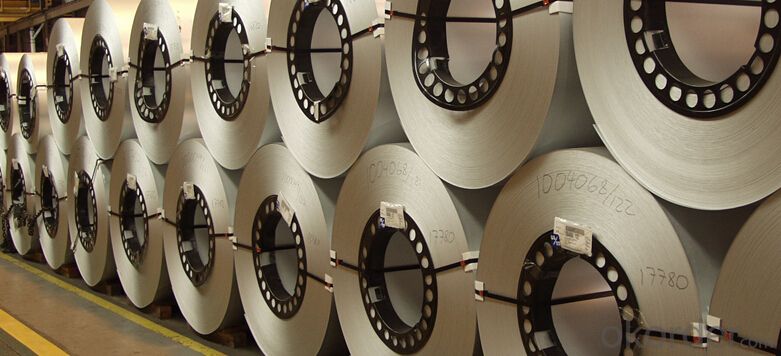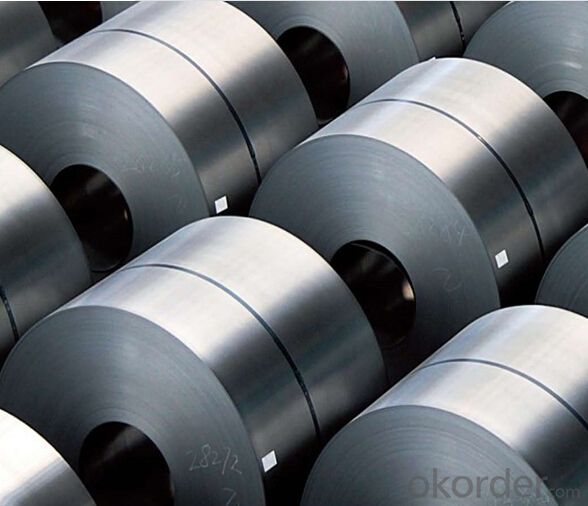Cold Rolled Stainless Steel Coil (316L/BA)
- Loading Port:
- Tianjin
- Payment Terms:
- TT OR LC
- Min Order Qty:
- 25 m.t.
- Supply Capability:
- 10000 m.t./month
OKorder Service Pledge
OKorder Financial Service
You Might Also Like
Description Info.
Model NO.:316L/BA
Surface Treatment:Ba
Technique:Cold Rolled
Standard:ASTM, GB, AISI
Steel Grade:316L
Export Markets:Global
Additional Info.
Packing:in Sea Worthy Packing
Standard:ASTM A240/ A480
Origin:China
HS Code:7219340000
Production Capacity:220000mt/Year
Product Description
CERTIFIED TO ASTM A240 AND ASTM A480
PRIME QUALITY WITH MILL TESTING CERTIFICATE
TYPE 316L
FINISH: BA/2BB
THICKNESS RANGE: 0.30 - 2.00MM
WIDTH: 1000MM/1219MM/1250MM/1265MM
EDGE: SLIT OR MILL
MOQ: 25MT / ITEM
COIL WEIGHT RANGE: 2.0MT - 20MT
PAYMENT TERM: T/T OR L/C
NO STENCILING/NO LINE MARKING


FAQ
1.What's your MOQ?
25MT, it is for one container.
2.Do you have QC teams?
Yeah, sure, our QC team is very important, they will keep the quality control for our products.
3. What's your normal delivery time?
Our delivery time about 10-20days for standard sizes, if you have other requirements like hardness and width ,it is about 20-40days. But don't worry ,we also try our best for the delivery time ,because time longer and our cost is higher.
4.Are the products tested before shipping?
Yes, all of our PPGI and GI was qualified before shipping. We test every batch every day.
- Q:How are steel coils used in the production of metal ceilings?
- Steel coils are used in the production of metal ceilings as they serve as the raw material. The steel coils are processed and shaped into the desired dimensions and patterns before being installed as ceiling panels.
- Q:What are the different types of coil leveling machines?
- There are three main types of coil leveling machines: precision levelers, corrective levelers, and stretcher levelers.
- Q:What are the different methods of coil end welding for steel coils?
- There are several different methods of coil end welding for steel coils. These methods include: 1. Resistance Welding: This method involves applying an electric current to the ends of the coils, causing them to heat up and melt together. Resistance welding is commonly used for joining steel coils due to its high efficiency and speed. 2. Laser Welding: Laser welding utilizes a high-energy laser beam to melt and fuse the ends of the steel coils together. This method provides precise control over the welding process and can produce high-quality welds. 3. Tungsten Inert Gas (TIG) Welding: TIG welding uses a non-consumable tungsten electrode and an inert gas, such as argon, to create a protective atmosphere around the welding area. This method is known for producing clean and strong welds, making it suitable for steel coil end welding. 4. Plasma Arc Welding: Plasma arc welding involves using a plasma torch to create an electric arc between the electrode and the workpiece. The intense heat generated by the plasma arc melts the ends of the steel coils, allowing them to be welded together. 5. Electron Beam Welding: Electron beam welding utilizes a high-velocity beam of electrons to heat and melt the ends of the steel coils. This method is often used for joining thick steel coils and offers deep penetration and high welding speed. 6. Friction Stir Welding: Friction stir welding involves a rotating tool that generates friction and heat between the steel coil ends, causing them to soften and fuse together. This method is commonly used for joining aluminum coils but can also be applied to steel coils. These are just a few of the different methods of coil end welding for steel coils. The choice of method depends on various factors such as the desired weld quality, production speed, material thickness, and application requirements.
- Q:How are steel coils used in the aerospace industry?
- Steel coils are used in the aerospace industry for various applications including manufacturing aircraft components, structural supports, and engine parts. The coils are typically processed and shaped into specific forms such as sheets or plates, which are then used to construct critical components of aircrafts, ensuring strength, durability, and performance.
- Q:I'm doing a project on stainless steel dining utensils and its a little more difficult than i thought it would be. There are no sites on the web that tells the creator or when it was first used. There's no sites that that i can see of that talk about the history of stainless steel dining utensils, only dining utensils in general. Please help, i can't change my project now ):
- The booklet 100 years of WMF (WMF: Württembergische Metallwarenfabrik / Wurttemberg Metal Ware Factory) includes the patent application (or better: trade mark application) for stainless Cromargan Steel for the production of cutlery in 1926. Cromargan was the company's fantasy name for stainless Krupp V2A steel. Page 86 (unfortunately WMF is a German company, the booklet therefore is in German). Has nice pictures anyways. Appendix: I found the text (a bit cut however) in English language (without images and booklet, just HTML). See below.
- Q:Can steel coils be coated with anti-corrosive substances?
- Yes, steel coils can be coated with anti-corrosive substances such as zinc, paint, or polymer coatings to protect them from rust and corrosion. These coatings act as a barrier between the steel surface and the surrounding environment, preventing contact with moisture and corrosive elements.
- Q:Hey everyone.I have a whetstone and a honing steel. I purposely tried to make one of my knives less sharp twice to see how well the whetstone and honing steel would work.It even seemed that when I was using my whetstone it wasn't as sharp as it was when I used my honing steel, but when I also used my honing steel after having sharpened my knife on the whetstone, it was razor sharp.I was wondering, is the whetstone only supposed to be used when the knife edge isn't as flat anymore or something? Like, only when it doesn't really have an edge anymore?Please explain your answer.Thanks everyone.
- You're not supposed to use the whetstone alone. It leaves a burr, which the steel removes. If you google using a whetstone, you'll see plenty of info. It is possible to use a finer stone in place of the steel.
- Q:Ok I know this sounds stupid but is there anyway to make stainless steel look older? It looks too new and I don't want it like that. Thanks.
- Just abuse it. You could hit with a hammer, expose it to flame, throw it at or grind it around on rocks or concrete, rub it with steel wool. (be artful in how you do this, the pattern could end up looking too deliberate if you're not careful.) For an example of naturally aged stainless steel, look at some cooking pots/pans. If you don't have any old ones, maybe your parents or someone you know does. They usually get a little banged up/scuffed/stained after a while. (I think the stainless just means it doesn't rust.)
- Q:How do steel coils contribute to corrosion resistance in products?
- Steel coils contribute to corrosion resistance in products by providing a protective layer that prevents direct contact between the steel surface and corrosive elements in the environment. The coil coating process involves applying a protective coating, such as zinc, to the steel surface, forming a barrier against moisture, chemicals, and other corrosive agents. This coating acts as a sacrificial layer, corroding in place of the steel, thereby extending the lifespan and enhancing the durability of the products.
- Q:can you play one?
- Well, my digital piano has a Steel Guitar setting that makes it kind of sound like one, but other than that I know nothing about them.
1. Manufacturer Overview |
|
|---|---|
| Location | |
| Year Established | |
| Annual Output Value | |
| Main Markets | |
| Company Certifications | |
2. Manufacturer Certificates |
|
|---|---|
| a) Certification Name | |
| Range | |
| Reference | |
| Validity Period | |
3. Manufacturer Capability |
|
|---|---|
| a)Trade Capacity | |
| Nearest Port | |
| Export Percentage | |
| No.of Employees in Trade Department | |
| Language Spoken: | |
| b)Factory Information | |
| Factory Size: | |
| No. of Production Lines | |
| Contract Manufacturing | |
| Product Price Range | |
Send your message to us
Cold Rolled Stainless Steel Coil (316L/BA)
- Loading Port:
- Tianjin
- Payment Terms:
- TT OR LC
- Min Order Qty:
- 25 m.t.
- Supply Capability:
- 10000 m.t./month
OKorder Service Pledge
OKorder Financial Service
Similar products
New products
Hot products
Related keywords





























